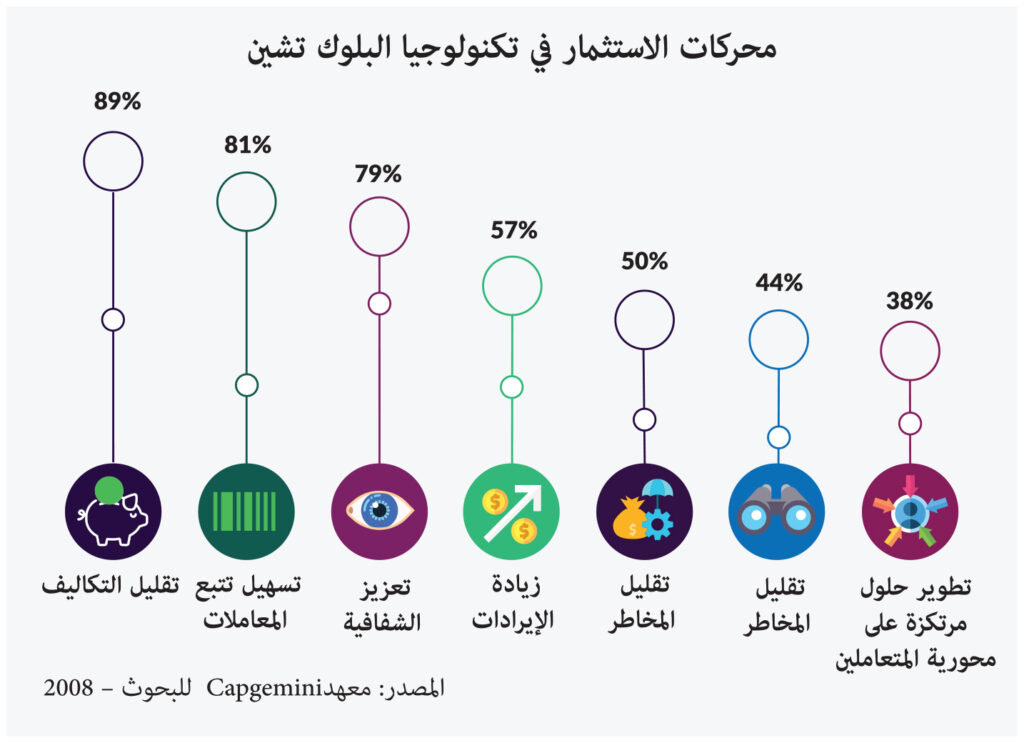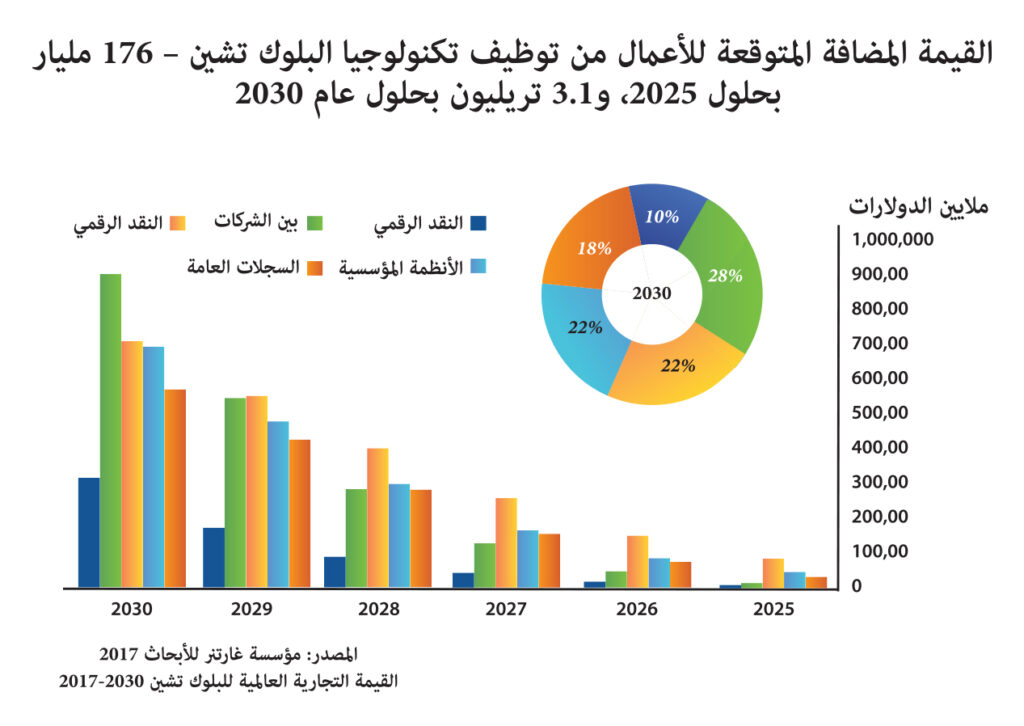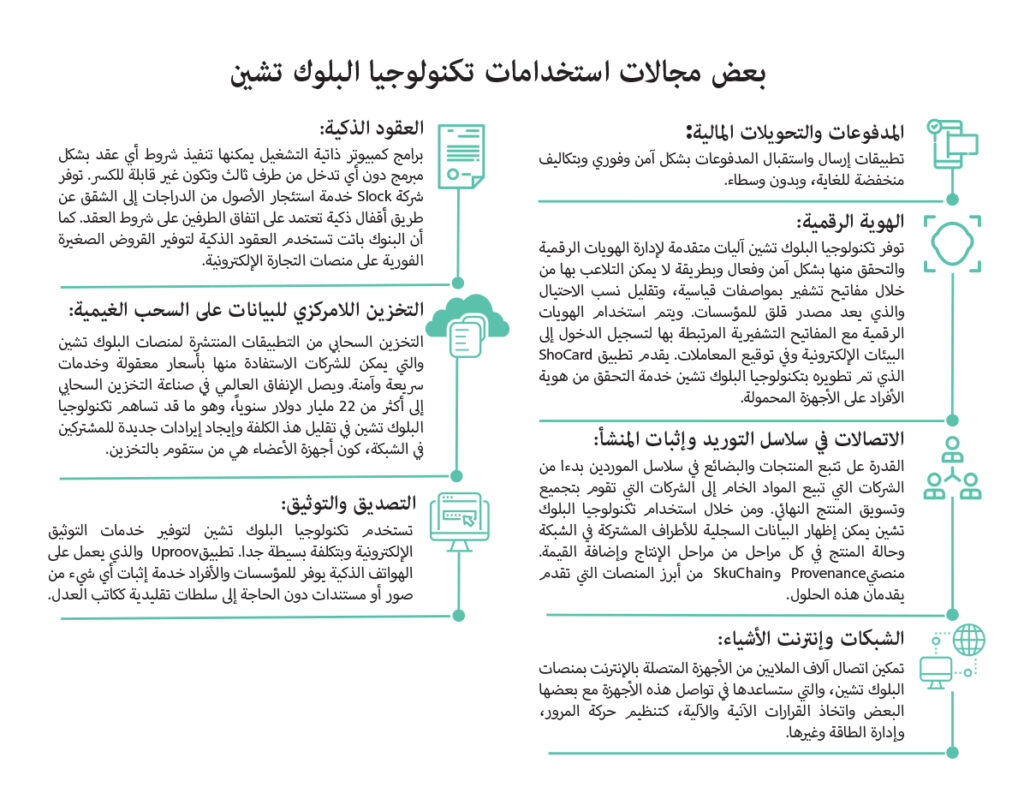
In the previous two episodes, we explored the advantages, importance, and capabilities of blockchain technology and its close connection to the value-added economic network, and showed that it is expanding significantly worldwide in terms of the diversity of its uses, the volume of transactions and the user base.
Despite this spread, it is noticeable that the technologies supporting the concept of blockchain or blockchain are still in their early stages and have not yet matured enough, and have not yet spread to the expected levels. Despite all the important advantages of this technology that we explained in the previous two articles, we find that there are a number of obstacles that still constitute a barrier preventing the spread of this technology in the sweeping way that is expected for it. We will try to highlight the most important of these obstacles.
First: As a new concept and emerging technology – and bearing many terms, protocols and complex technical tools – the field of blockchain is still limited to a few, and there is a significant lack of expertise and developers, which may explain the state of institutions not wanting to use this technology yet. It is also noticeable that many adopt the principle of watching and waiting until the picture becomes clearer.
Second: the lack of regulatory controls for the use of blockchain in the commercial, governmental, and public spheres.
Third: the limited protocols and detailed specifications for regulating private blockchain networks. In other words, there is a need to develop the knowledge of both the beneficiaries and the companies developing technological solutions to ensure the proper use of this technology and its efficient and effective use.
Fourth: Open public networks suffer from the problem of the growing size of the general ledger file among users and individuals, who face the increase in the size of these files, especially with the aging of personal computers. The question is how to manage chains with the increase in the number of users in the world to include hundreds of millions, knowing that the number of users of this network globally at the present time is only several tens of millions. That is, the higher the number of subscribers on the public networks, the more heavy and more difficult it is to process the outgoing blocks, and the cost also increases, including the high consumption of electrical energy.
Fifth: One of the possibilities contained in small blockchain platforms – that is, when there are small numbers of subscribers and contributors in the network – is the danger of manipulating the database of the used blocks, as it is always necessary to certify the validity of the block to insure its authenticity 51% of the subscribers, and this manipulation is possible in If the participants were few in number and assuming the possibility of agreement among them.
Sixth: The difficulty of querying the block database because it is not a traditional database, a point that will find a way to solve it in the future, but it is still a complicated matter at the present time, and it requires the intervention of third parties specialized in this work.
Seventh: Public Blockchain networks require a large amount of energy to process, and devices with special speeds and capabilities, which raises the cost of this processing, which pays to reward and compensate the network subscribers and those participating in the processing operations for it, which is one of the reasons for creating the encrypted currency “Bitcoin”. Which we will single out for our next article.
Globally, many economic institutions, led by banks and governments, have started to adopt blockchain technology. A recent report issued by McKinsey, a consulting company, indicates that 90% of banks in Europe and North America have evaluated and surveyed during the year 2018 their opportunities in blockchain applications, and concluded that they may reduce banking operating costs by 30%.

On the other hand, the global blockchain technologies market revenues are estimated at $20 billion in revenue by 2024. The same forecasts also indicate that returns on investments in blockchain technology, in terms of business value added, will exceed $360 billion before 2026, and that by 2030, this value will exceed 3 trillion dollars, which will make it one of the most profitable industries.

And spending on blockchain technology in the financial sector totaled $552 million in 2018. Blockchain networks have completed transactions worth more than 270 billion, outperforming the world’s largest money transfer companies.
In terms of government practices, the Dubai government will be the first government to adopt blockchain technology in the world, which announced its project in 2017 on the Hyperledger textile platform, which is expected to be completed in 2020.
Based on our view of the possibilities of the growth and development of blockchain technology, we are undoubtedly facing an unparalleled global revolution, which will affect human lives in a dramatic way. Let’s look at some scenarios:
First: The merger between blockchain platforms and social media platforms is one of the expected possibilities during the third decade of this century, which will have a very large impact on doubling the number of people affiliated with the blockchain networks in an unprecedented manner. If the proportion of people today within these networks is estimated at about half a percent, then with the entry of social media platforms into this fray, it is expected in the weakest possibility that the number will multiply 100 times compared to the current situation. This in itself would be considered a huge global technological revolution, but this development may lead to things that must be taken into account from now, if we take into account the structure of the decentralized system, which may go beyond state systems and institutions, which may be in the hands of known or unknown parties.
Second: Given the open communication ability through blockchain platforms, and its reach today to about 17 platforms, it is expected that during the third decade, new generations of institutional applications will be issued on these platforms, which will enable institutions to open up and enhance their ability to integrate through supply chains. chain) is very large, and supports the reality of business to business relationships, as these procedures will depend on the same concepts and platforms, regardless of the application used, which may open the way for digital currencies in an unprecedented way in commercial transactions.
Third: With the trend of governments to adopt this technology and enter it in this field, there is a great global transformation wave, especially in the nature of government services in terms of efficiency, effectiveness and speed of completion of transactions. It is expected that governments will adopt the concepts of “open data” by making available a set of data via blockchain networks to enable the private sector to rely on it and to develop and provide other innovative services.
Fourth: Thousands of millions of Internet-connected devices will connect to the Blockchain platforms, and in turn enable some instant and automated decisions through this network, amid endless possibilities for multiple uses, which include monitoring international cross-border trade, governance of traffic systems, payment of violations, enabling industrial management, and their communication With stores, and supply companies directly, especially with the development of artificial intelligence and its entry into all digital applications in the future.

From the above it is clear that we are facing a new reality that we expect within ten years from now, which will achieve a real globalization of economic procedures and practices. It is possible that some can use it to sell real estate through international blockchain platforms, and this example we give to illustrate the size of the opportunities on the one hand and the challenge on the other, which promises to reduce the current traditional role of the state in proving ownership and proof of transfer, and this example does not exceed the simplest results of the spread Blockchain platforms and their access to ordinary users. The underlying question is how can we assess the degree of preparedness of our systems and legislation for this variable present in our hands, and only a decade separates us from it?
We call upon decision makers, policy makers, government service sectors, education and banks to take the initiative to study the impact of this technology on their business and to identify possible uses for it. We also call for the establishment of an Arab Blockchain Association, to serve as a knowledge, technological and legislative compass for users, whether they are governments, companies or individuals.
We also call for monitoring the current experience of the Dubai government carefully and even cooperating with it, to understand this technology well, to learn about the various international experiences, and to form specialized and expert groups with this technology to start implementing it, and we see that the field available now and the fastest is the banking sector. We also invite information technology companies to enter into this technology and invest in it and their human resources to meet the requirements of the upcoming and accelerating market.
The best and clear option before us is to expedite the study and determine our options and our approach to the use of this technology, and to legislate what is necessary, in a cooperative manner between the Arab countries, bearing in mind the ability of this technology to solve many administrative and bureaucratic problems that we have always suffered from, and its simplest forms in the issuance of certificates of origin For Arabic products in a transparent, available and reliable way.
| About | |
|---|---|
| Initiatives | |
| Knowledge | |
| Services | |
| Media Center | |
| Contact |